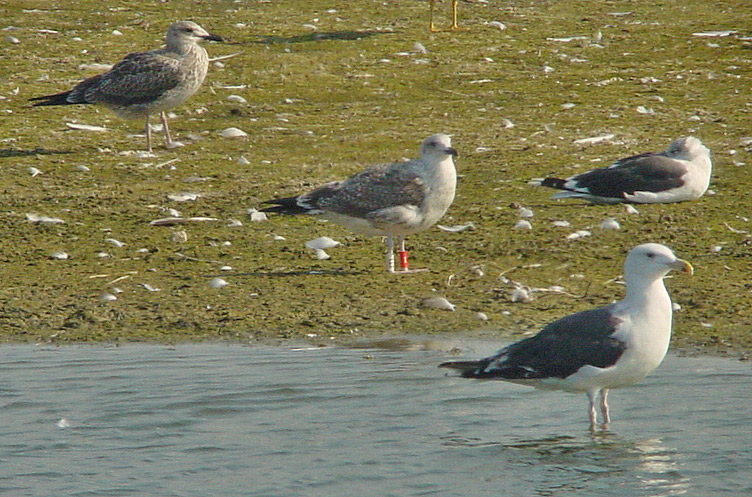 Lesser Black-backed Gull (graellsii & intermedius)
Lesser Black-backed Gull (graellsii & intermedius)
(last update: May 17 2015)
lbbg 1cy May
lbbg 1cy June
lbbg 1cy July
lbbg 1cy August
lbbg 1cy September
lbbg 1cy October
lbbg 1cy November
lbbg 1cy December
lbbg 2cy January
lbbg 2cy February
lbbg 2cy Mar-April
lbbg 2cy May
lbbg 2cy June
lbbg 2cy July
lbbg 2cy August
lbbg 2cy September
lbbg 2cy October
lbbg 2cy Nov - Dec
lbbg 3cy Jan-April
lbbg 3cy May
lbbg 3cy June
lbbg 3cy July
lbbg 3cy August
lbbg 3cy September
lbbg 3cy October
lbbg 3cy Nov - Dec
lbbg sub-ad Jan-April
lbbg sub-ad May
lbbg sub-ad June
lbbg sub-ad July
lbbg sub-ad Aug
lbbg sub-ad Sept
lbbg sub-ad Oct
lbbg sub-ad Nov
lbbg sub-ad Dec
lbbg adult January
lbbg adult February
lbbg adult March
lbbg adult April
lbbg adult May
lbbg adult June
lbbg adult July
lbbg adult August
lbbg adult September
lbbg adult October
lbbg adult Nov - Dec
LBBG 2cy IE September 18 2003, Naaktstrand - Maasvlakte, the Netherlands.
A local 2cy LBBG, ringed last year at Maasvlakte, near Rotterdam. Primary moult well in line with other local Dutch 2cy LBBG: P1-P8 fully grown and P9 already longer than P7. Rectrices all second generation. The scapulars are old and fresh second generation-like feathers, showing an anchor pattern. The fresh upper scapulars and upper lower scapulars are most probably third generation.
This bird followed the common moult strategy in the wing-coverts, with the first replaced feathers already loosing the warm tones, turning pale-based. Note e.g. the inner greater coverts and inner median coverts. Now the lesser coverts in the carpal edge have been replaced as well, this individual has started the partial autumn moult. In the right wing, the tertials have been replaced to second generation feathers in the complete moult. Now, in autumn, a second wave will be initiated in the partial moult: the two upper tertials have been shed again. In the wing-coverts, the two innermost greater coverts have been shed. One central median covert is fresh and most probably third generation. This could be a replaced feather from the post-juvenile moult.
